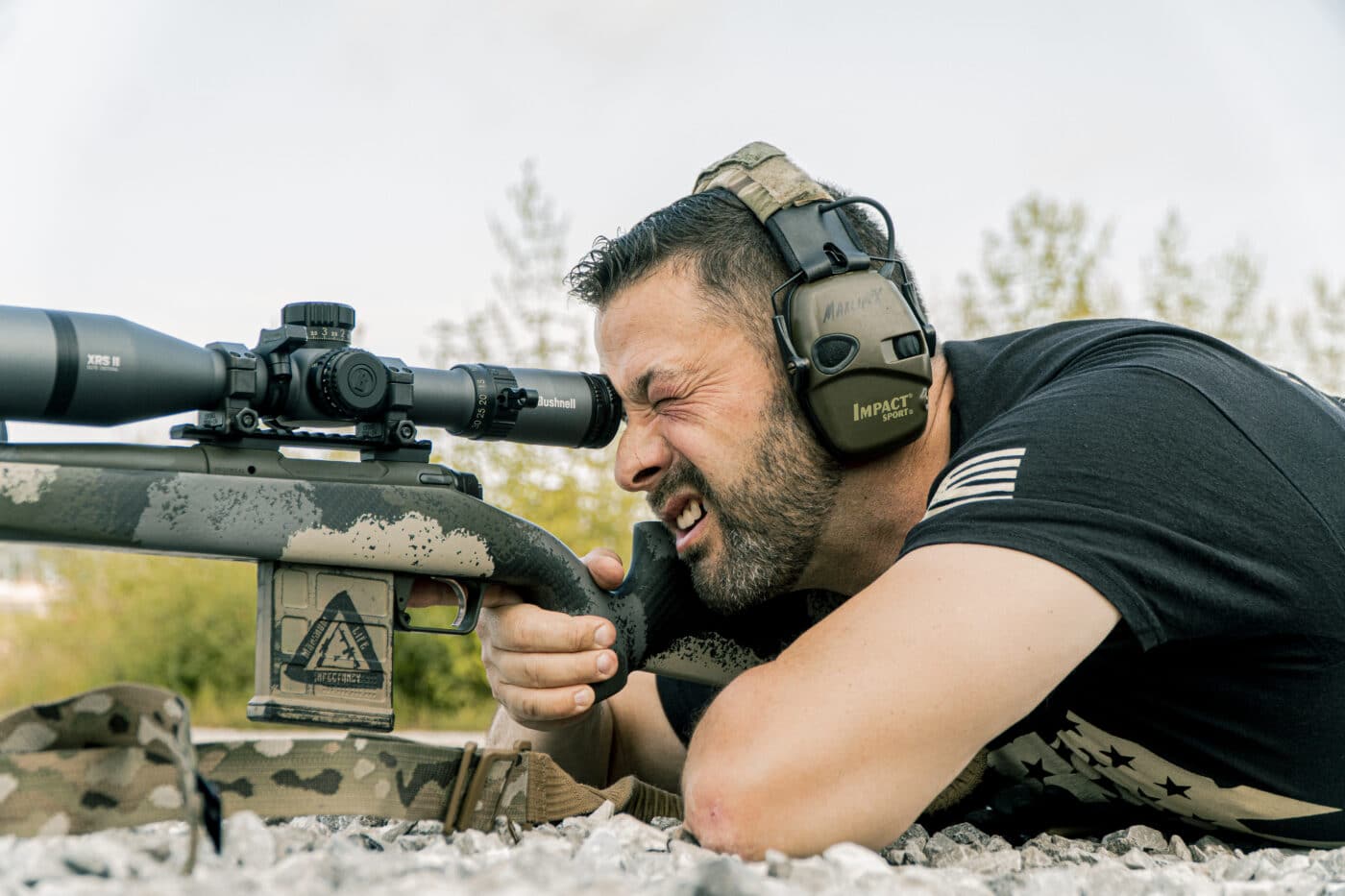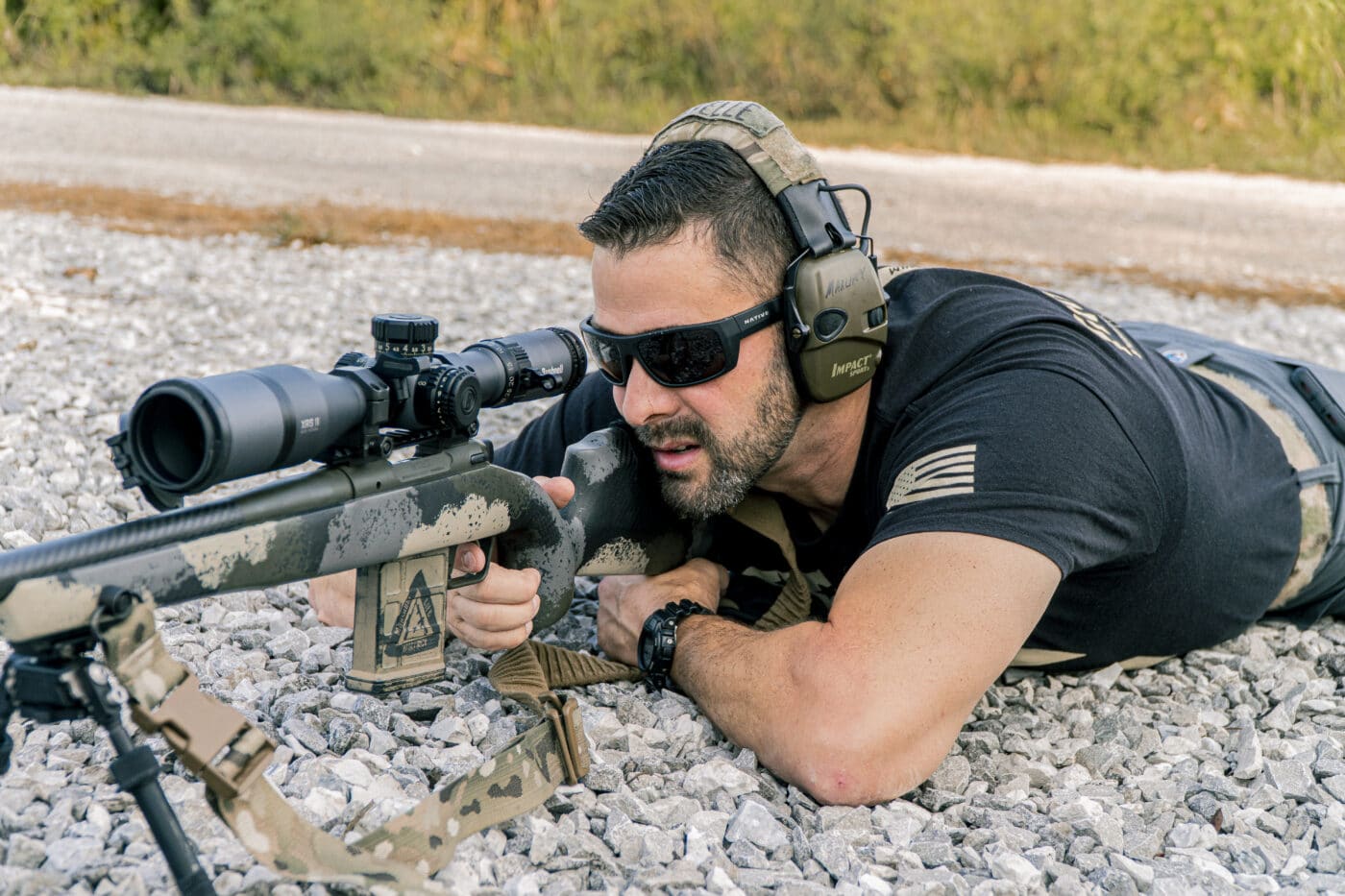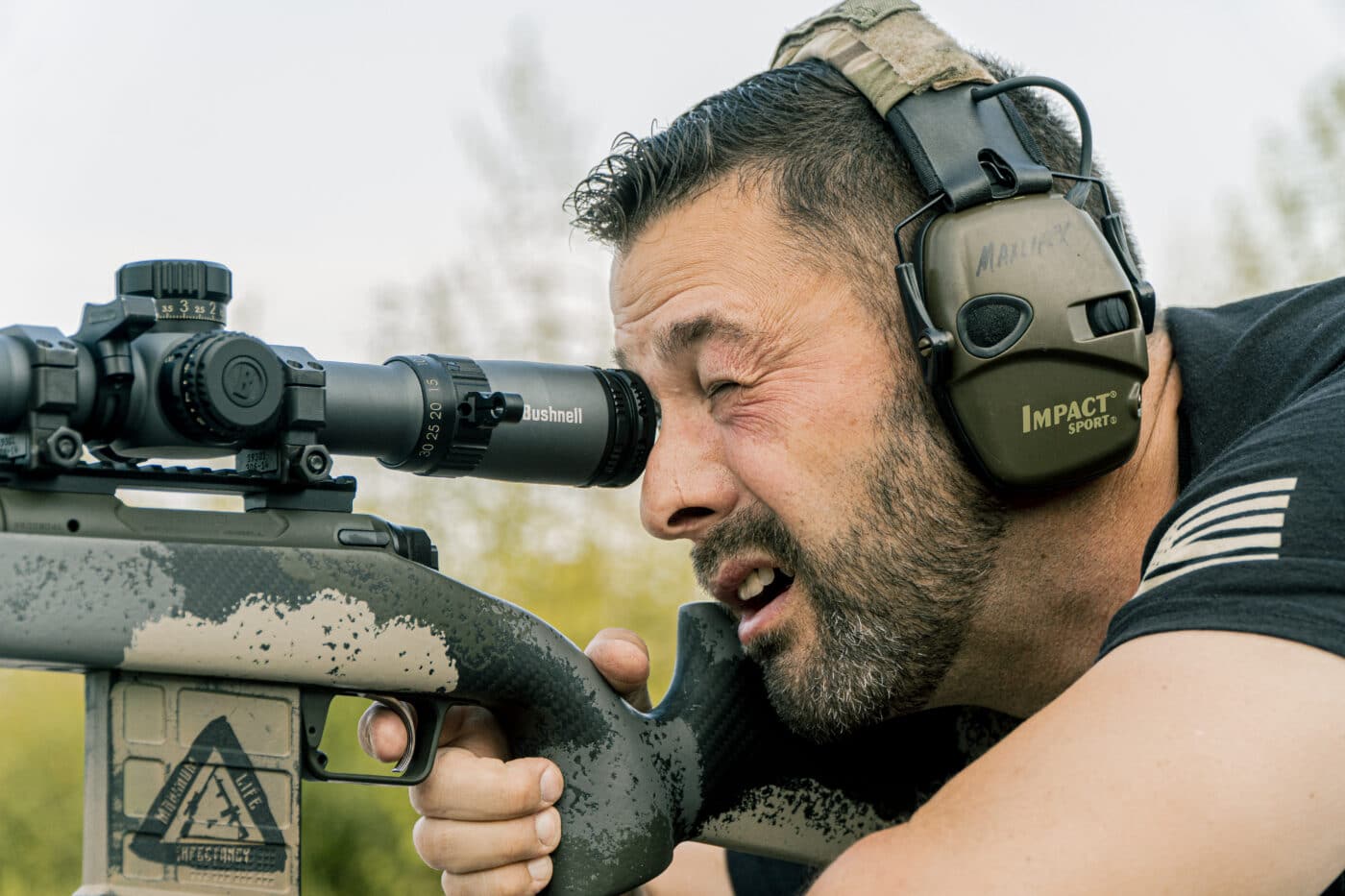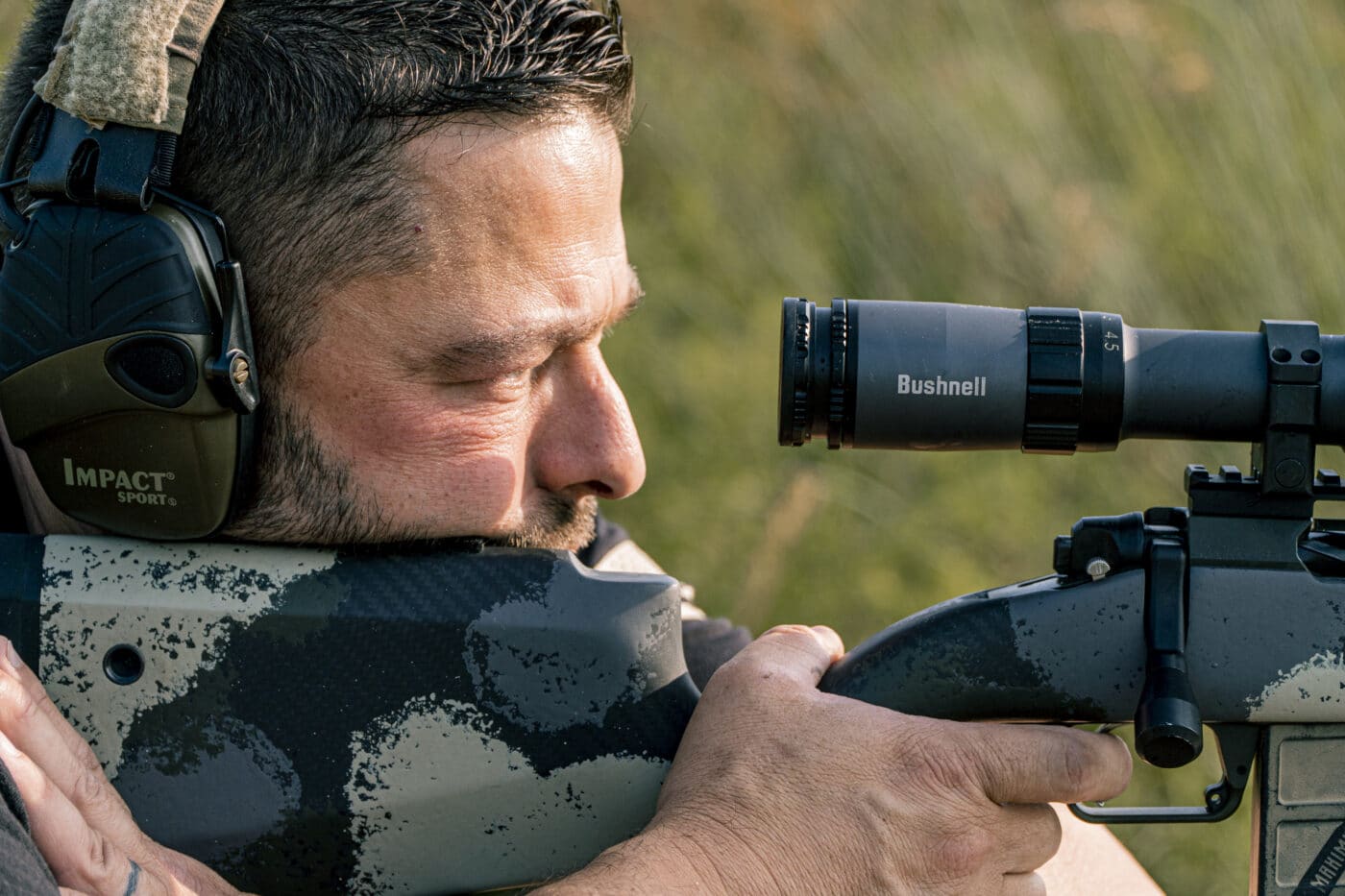There is a problem in the scoped rifle world that many don’t talk about. This is probably because it’s completely embarrassing to admit you have done it. Anyways, the problem I’m talking about, of course, is scope bite. If you don’t know what scope bite is and have never experienced it, consider yourself lucky!

Scope bite is the term we use to describe when the scope hits you in the face when you fire a shot. This typically happens when using high-powered rifles like a .308 or bigger. It can result in bruising or possibly a split-open head, with a cut bad enough to need stitches. It just depends on a variety of factors. This is often seen as a “noob” injury by inexperienced shooters, and that’s why few ever admit that it has happened to them. Although it does happen to new shooters, it can also happen to you if you are not careful.
Get Outta Dodge
How can it happen to you easily? Grant, the instructor at GunSpot, shared a story of teaching a scoped rifle student and using their rifle for a demonstration. The eye relief was set up for that shooter and not Grant. So, he got set up and took the shot, only for the scope to smack him in the head. So how could this happen to an experienced SWAT sniper and scoped rifle instructor? Eye relief. While in teaching mode he overlooked the eye relief portion of this shooter’s set-up.

If you don’t know what eye relief is, it is the minimum to maximum distance your eye can be from the rear lens objective and see no scope shadow. Now, what is scope shadow? That’s when you can see the inner wall of the scope tube in your view and it looks like a black shadow creeping in on your image.
Eye relief is often called eye box by shooters because it’s the box your eye has to be in to use your scope effectively. Most modern good scopes have a fairly generous eye relief that’s from about 1.5” to 4” away, so you should have plenty of clearance to not get smacked in the face with your scope. The newer LPVO’s selected by the United States Military has relief out to 4.1”.
Danger of Scope Bite
Not having proper eye relief can set you up for scope bite because it puts your face closer to the scope. Using someone else’s rifle or having the guy at the gun counter mount your scope is a way to greatly increase your chances of getting smacked!

The reason is we are not all built the same way. Some of us are tall, some of us are short, some of us have long necks like myself, and we all know those people who appear to have no neck. All of those factors plus some others can mess with your eye relief. A guy with a shorter neck will have to have the scope set farther back, then if you get in there to shoot with a longer neck you will be on the shorter end of that eye box meaning the scope has less distance to travel to split your skull open.
The Eye Relief Solution
The way you avoid this most easily is to shoot your own rifle; if you are not shooting one you set up, be extra cautious. If it’s your rifle, set up a proper eye box for you, your eyes and your neck. This is going to put you in the optimal shooting position not just to avoid scope bite but to shoot better as well.

Another little trick you can do to make sure your cheekweld is in the same position and also to tape something you can feel on your stock. I have seen people tape small bits of foam to their buttstock to learn through muscle memory and feel where their cheek needs to be. As a result, they will pull the rifle up and touch that marker to their cheek and know they are at good eye relief. This is a similar trick to how the U.S. military used to teach soldiers to touch their nose to the charging handle. An adjustable stock similar to that on certain Waypoint models can help you always have proper eye relief, too.
Conclusion
Stay safe out there and avoid getting bit by the scope by setting up your own rifle. Have a good scope with an eye relief as close to that 4” range if you can afford it. Get a good stock with adjustability that helps you achieve optimal eye relief. As always with guns, be attentive to what is going on, both downrange and where you are at behind the scope.
Editor’s Note: Please be sure to check out The Armory Life Forum, where you can comment about our daily articles, as well as just talk guns and gear. Click the “Go To Forum Thread” link below to jump in and discuss this article and much more!
Join the Discussion
Featured in this video
Continue Reading
Did you enjoy this video?

 117
117







